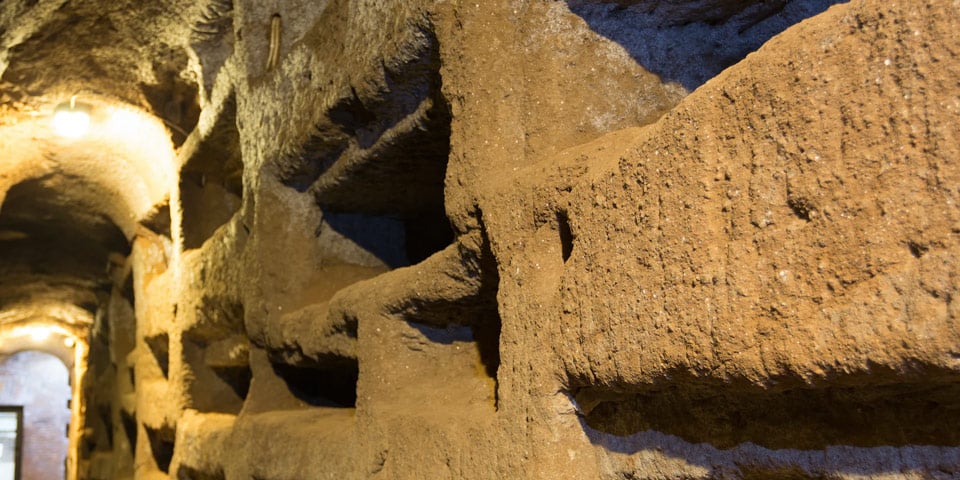

24828 views

| Tickets |
Buy tickets online: |
|---|---|
| Tip | Advance booking of visit times is highly recommended. Tours are available in English, Spanish, German, Italian, Polish and French. |
| Opening Hours |
Sunday:
- ,
-
Monday:
- ,
-
Tuesday:
- ,
-
Thursday:
- ,
-
Friday:
- ,
-
Saturday:
- ,
-
|
| Recommended tour | |
| Address | Via Appia Antica, 110/126, Roma |
| Website | www.catacombesancallisto.it |
| Accessibility: Wheelchairs are not allowed inside the catacombs, and visitors with mobility issues may find the uneven terrain challenging. Photography Restrictions: Photography and videography are strictly prohibited within the catacombs to preserve the integrity of the ancient artifacts and artwork. Dress Accordingly: Be prepared for cooler temperatures and high humidity by dressing appropriately for your underground exploration. | |
| The walk to the catacombs is approximately 45 minutes long. You have two main routes to choose from: one starting at the Circo Massimo metro station, following Viale delle Terme di Caracalla for about 40 minutes until you reach the catacombs, or beginning at San Giovanni and tracing the ancient walls to Porta San Sebastiano and the start of the Appian Way, then making a left turn. | |
The Catacombs of St. Callixtus (Italian: Le Catacombe di San Callisto a Roma) are one of Rome’s most significant and expansive catacomb complexes, serving as the final resting place for early Christians, popes, and martyrs. Located along the Appian Way, these underground burial chambers contain intricate frescoes, inscriptions, and ancient artifacts that provide insights into early Christian burial practices and religious beliefs. Visiting the Catacombs offers a profound journey into the history of Christianity in ancient Rome, revealing this sacred site’s spiritual and cultural heritage.
Contents
ToggleThe Catacombs of Saint Callixtus, located along the historic Appian Way in Rome, are among the most renowned and significant catacomb complexes in the Christian world. Named after Pope Callixtus I, who was martyred in the early 3rd century and later became the administrator of these catacombs, this vast underground cemetery spans several levels and corridors, serving as the final resting place for numerous early Christians, popes, and martyrs.
The origins of the Catacombs of St. Callixtus can be traced back to the 2nd century AD, during a time when Christianity was persecuted under Roman rule. These underground burial chambers provided a safe and sacred space for Christians to bury their dead and gather for worship in secret. Over time, the catacombs expanded and evolved, becoming a central hub for the Christian community in Rome and a symbol of resilience and faith amidst adversity.
The Catacombs of Saint Callixtus grew in prominence during the papacy of Pope Callixtus I (217–222 AD), who converted part of the catacombs into a designated burial site for popes and elevated its status as a pilgrimage site. Under his administration, the catacombs were meticulously organized and decorated with intricate frescoes, inscriptions, and symbols that reflected the burgeoning Christian iconography of the time.
Read also about the Pantheon in Rome.
Today, the Catacombs of St. Callixtus offer a fascinating glimpse into the early days of Christianity in Rome, preserving a rich tapestry of art, history, and spirituality beneath the surface of the Eternal City. As one of the most visited catacomb complexes, it continues to inspire and educate visitors about the enduring legacy of early Christians and the profound impact of their faith on the cultural and religious landscape of Rome.
Read also about Saint Peter’s Basilica in the Vatican City.
Author: Kate Zusmann
This website uses cookies. For more info read the cookies policy
Rome.us © 2025. Created with love by Roman experts and guides.